Introduction to the Serengeti and Maasai Mara
Overview of the Serengeti National Park
Let’s kick things off with the Serengeti—arguably the most iconic national park in Africa. Spanning over 14,750 square kilometers in northern Tanzania, the Serengeti is a symbol of Africa’s wild heart. The name “Serengeti” comes from the Maasai word “Siringet,” which means “endless plains.” And that’s precisely what you get: a sprawling savanna that stretches as far as the eye can see, teeming with wildlife.
The Serengeti is world-renowned for its sheer diversity of animal species and its role as one of the core areas in the annual Great Migration. Over 1.5 million wildebeest, 250,000 zebras, and countless gazelles traverse its plains each year in a dramatic journey of survival and instinct. But it’s not just about the migration. Serengeti is home to Africa’s Big Five—lion, leopard, elephant, buffalo, and rhino—as well as cheetahs, hyenas, giraffes, crocodiles, and over 500 species of birds.
Its protected status since the 1950s and UNESCO World Heritage designation mean that the ecosystem here remains relatively untouched. Visitors to the Serengeti often talk about the park’s profound sense of space, the endless skies, and that thrilling feeling of being completely immersed in nature.
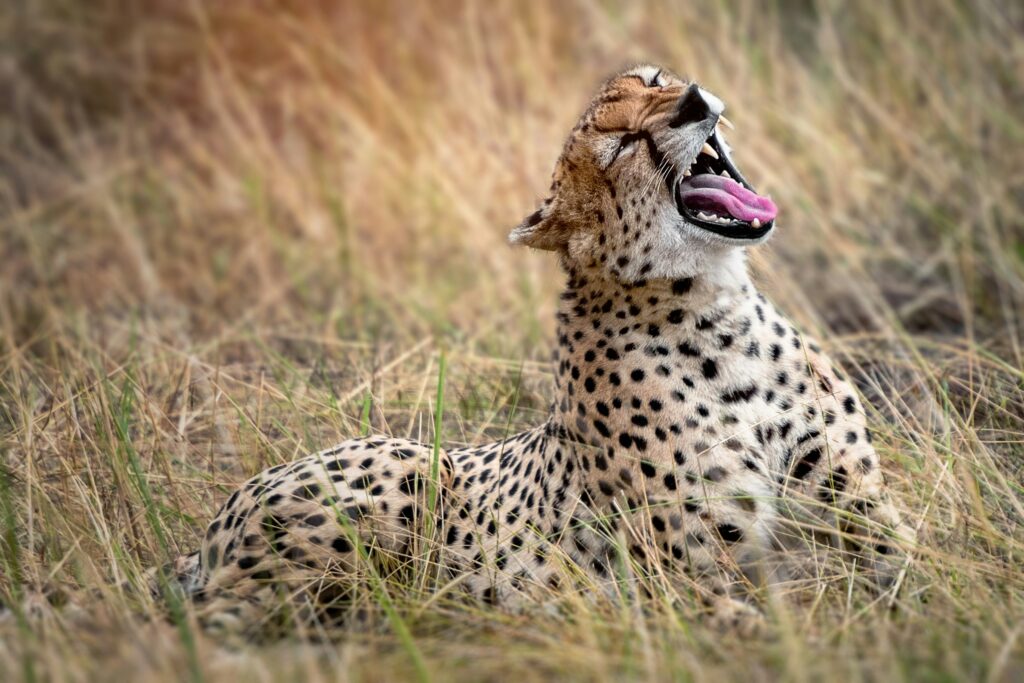
Overview of the Maasai Mara National Reserve
Now let’s cross the border to Kenya and step into the Maasai Mara, often lovingly called “The Mara.” It’s smaller than the Serengeti, covering around 1,510 square kilometers, but what it lacks in size, it more than makes up for in density of wildlife and accessibility. The Maasai Mara is essentially the northern extension of the Serengeti ecosystem and is just as important a player in the Great Migration.
Named after the indigenous Maasai people and the Mara River that cuts through it, this reserve is one of the most popular safari destinations in the world—and for good reason. Picture golden grasslands dotted with acacia trees, lions basking in the sun, and elephants marching across open plains. That’s the Mara.
Here, you’ll also find a high concentration of big cats—lions, leopards, and cheetahs are frequently spotted, often within just a few hours of game driving. The proximity to Nairobi makes it incredibly accessible, and its wide range of accommodations makes it suitable for every type of traveler, from luxury seekers to budget-conscious adventurers.
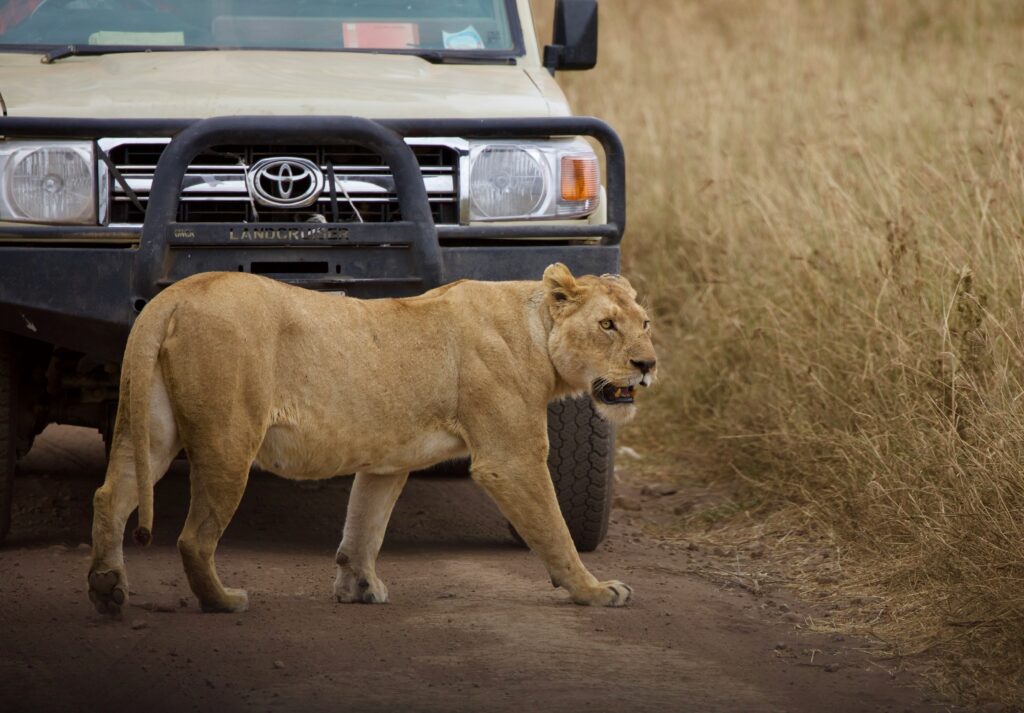
Geographic Location and Accessibility
How to Reach the Serengeti
Getting to the Serengeti might feel like a journey in itself—but that’s part of the adventure. The park is located in northern Tanzania, and most international travelers fly into Kilimanjaro International Airport (JRO), located near Arusha. From there, you can either take a connecting flight into one of the Serengeti’s several airstrips or opt for an overland journey, which can take between 6 to 8 hours depending on the route.
Many travelers combine the Serengeti with other Northern Circuit parks like Ngorongoro Crater, Lake Manyara, and Tarangire, making the trip a full-fledged safari circuit. While the travel time might seem daunting, those who make the journey are rewarded with wide open spaces, fewer crowds (especially in the central and northern Serengeti), and an incredibly authentic wilderness experience.
Road conditions can be rough, especially during the rainy season, so a 4×4 vehicle is a must. The remoteness of the Serengeti means less commercialization, which adds to its allure for true wildlife enthusiasts.
How to Reach the Maasai Mara
The Maasai Mara is a bit more traveler-friendly in terms of accessibility. If you’re flying into Kenya, you’ll most likely arrive at Jomo Kenyatta International Airport (NBO) in Nairobi. From there, the Maasai Mara is just a short 45-minute flight away to one of its several airstrips, or you can take a scenic 5–6 hour drive, which allows you to see more of rural Kenya.
The ease of access makes the Mara ideal for shorter trips or first-time safari-goers. Because it’s a popular destination, there’s good infrastructure in place—better roads, more lodges, and well-coordinated tour operators. You could leave Nairobi in the morning and be watching lions hunt by afternoon—talk about convenience!
This accessibility, however, comes with a trade-off: more visitors. During peak season, especially when the migration crosses into Kenya, you may find yourself sharing sightings with several other vehicles. But for those who want a jam-packed wildlife experience in a short amount of time, the Mara delivers.
Wildlife Experience
The Big Five and Beyond in Serengeti
When it comes to raw biodiversity, the Serengeti is hard to beat. You can encounter the famous Big Five almost year-round, though sightings of black rhinos are rarer and typically limited to specific areas like the Moru Kopjes. Lions are practically everywhere—especially in the central Seronera region—often lounging on rocks or tracking prey through the grass.
The Serengeti also supports a large population of cheetahs, often spotted on termite mounds scanning for their next meal. Leopards lurk in the riverine forests, while elephants roam the plains in impressive numbers. Buffalo are everywhere—often seen in large herds that dominate the landscape.
And don’t forget the “Little Five”: the elephant shrew, buffalo weaver, leopard tortoise, ant lion, and rhino beetle. It’s details like these that make the Serengeti not just a destination, but an ecosystem that keeps revealing itself layer by layer.
Migratory birds, reptiles, and hundreds of other mammals contribute to a complex food web that’s both beautiful and brutal. Nature lovers, researchers, and photographers often choose the Serengeti for this rich biodiversity.

In addition to the Big Five—lion, leopard, elephant, buffalo, and rhino—the Serengeti hosts a stunning array of wildlife that deserves attention. You’ll frequently see large herds of wildebeest, zebra, and Thompson’s gazelle, especially during the Great Migration. Wildebeest crossings at the Grumeti and Mara Rivers are among nature’s most dramatic spectacles.
Apart from the giants, the Serengeti teems with smaller but fascinating species like giraffes munching on acacia, hippopotamuses wallowing in rivers, and spotted hyenas shadowing big cats. Bird enthusiasts are in their element too—look out for secretary birds bowling across the plains, hornbills perched high, and colorful roller birds alighting on bushes.
What sets the Serengeti apart is its sheer scale and diversity: from riverine thickets to kopjes (rock outcroppings) and acacia woodlands—a wide variety of habitats support diverse populations. Because of the park’s size and varying terrain, sightings can feel more spontaneous and authentic, rewarding exploration beyond the main tourist hubs.
Wildlife Encounters in Maasai Mara
The Maasai Mara may be smaller, but what it offers is density. You don’t need to drive for hours to find wildlife here—it finds you. The Big Five are all present, with lion sightings being particularly frequent. In fact, the Mara has some of the highest concentrations of lions anywhere in the world.
Cheetahs love the open plains, and it’s not unusual to see them hunting in broad daylight. Elephants and buffalo roam freely, and leopards are often seen lounging in the trees. Rhinos are rare but can be found in more protected areas of the reserve and adjacent conservancies.
The Mara is also a birdwatcher’s paradise, with over 450 bird species including lilac-breasted rollers, vultures, ostriches, and various raptors. You’ll find action-packed game drives here, often featuring dramatic predator-prey interactions that happen right before your eyes.
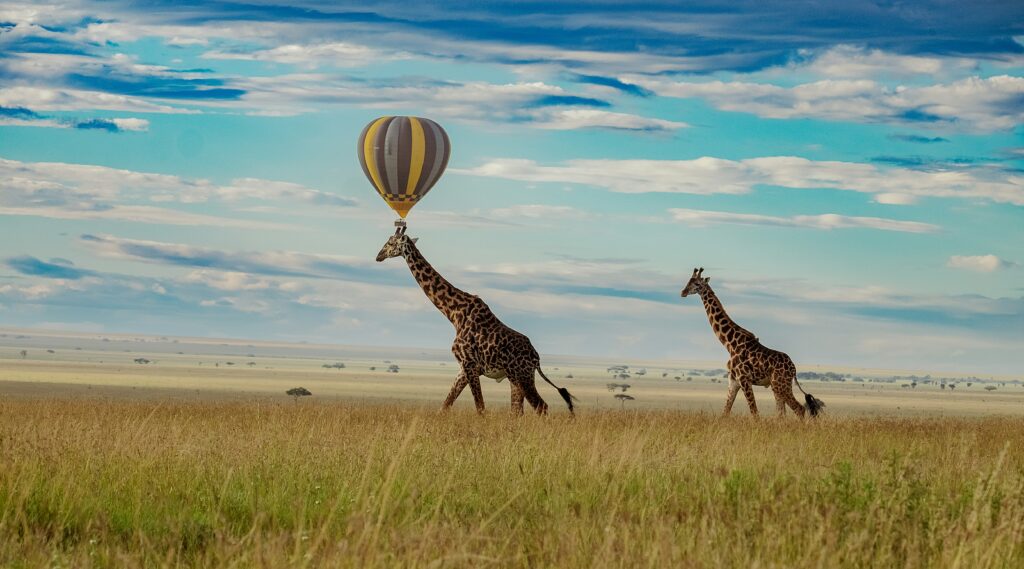
The Maasai Mara excels in visibility—intense wildlife action happens daily in compact, accessible terrain. Predator sightings are particularly frequent: lions often hunt in bachelor groups, while cheetahs streak across open plains in broad daylight. Leopards perch in trees or stalk game from riverine thickets.
A major highlight is watching Mara River crossings by thousands of wildebeest. From July through early September, visitors witness chaotic scenes as animals brave crocodile-infested waters. These crossings are vivid and cinematic. Other popular attractions include large herds of buffalo, elephant families, and giraffes browsing tall trees. You’ll often spot hyenas, jackals, and colorful raptors circling overhead.
In addition, the Maasai Mara reserve is complemented by adjacent conservancies like Olare Motorogi and Mara North, providing quieter areas, off-road game drives, and greater chances of connecting with wildlife in undisturbed landscapes. The compactness of the Mara ensures encounters are frequent, unpredictable, and thrilling.
The Great Migration: A Shared Phenomenon
When and Where to Witness It
The Great Migration is a year-round circuit involving over 1.5 million wildebeest and hundreds of thousands of zebras and gazelles moving between Tanzania (Serengeti) and Kenya (Maasai Mara). Timing matters:
- December to March: Herds calve in southern Serengeti (Ndutu region).
- April to May: Movement northwards through central Serengeti.
- June to July: Approaching western corridor Serengeti crossings at Grumeti River.
- July to October: Great Migration crosses into Maasai Mara across the Mara River in Kenya.
- October to November: Herds head back to southern Serengeti.
This seasonality means your safari choice may hinge on timing—visiting between July and October places you in the Mara during peak crossings; for earlier migration events, Serengeti is ideal.
Differences in Migration Viewing Between the Two Parks
Witnessing the migration in Serengeti offers broader, more expansive views. You’ll see large herds moving across sweeping landscapes, river crossings, and predator interactions in a more open environment. Because Serengeti is larger and less crowded, viewing can feel more personal and immersive.
In contrast, Maasai Mara delivers intense, dramatic action concentrated around the Mara River. Elevated riverbanks provide excellent vantage points to observe crossings. However, because many vehicles aim for these same spots, crossings can feel more crowded, especially during peak season.
If you want wide-angle vistas and fewer crowds, Serengeti is a better fit. If your priority is witnessing river crossings and predator drama, Mara is unbeatable—especially during July and August.
Safari Activities Offered
Game Drives and Night Safaris
Both Serengeti and Maasai Mara are known for thrilling game drives, but their offerings differ slightly in approach and regulation. In the Serengeti, game drives are extensive and immersive, often lasting up to 8 hours a day, allowing travelers to explore the park’s varied regions—from Seronera’s central plains to the Grumeti River. While night safaris are restricted within the national park, some private lodges on the park’s periphery may offer night-time game viewing, adding a different dimension to your safari.
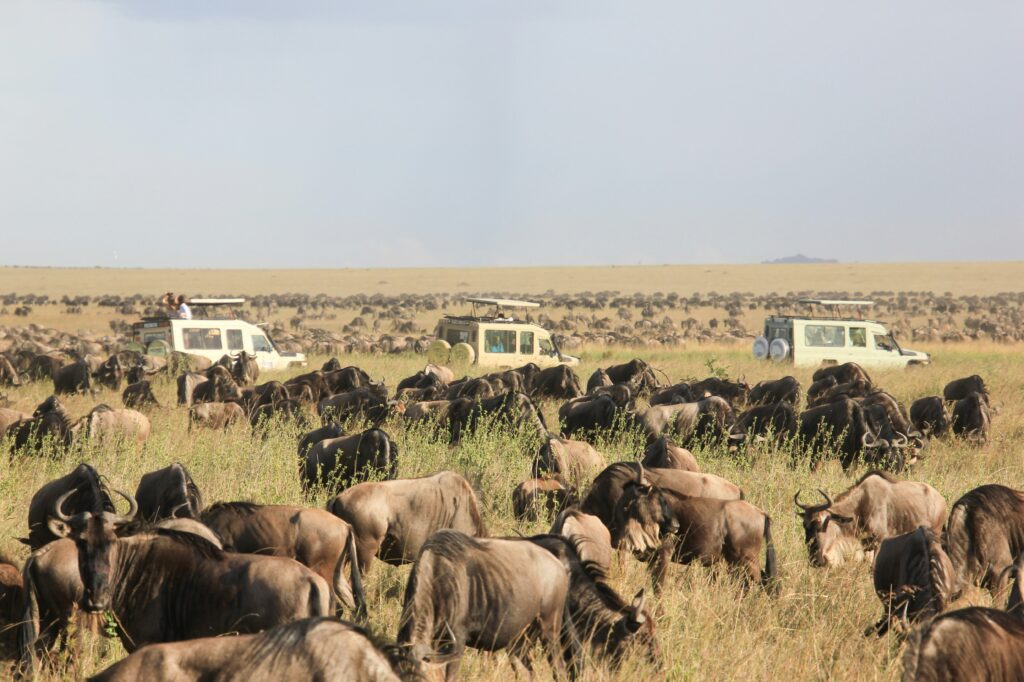
In contrast, the Maasai Mara, especially within its conservancies like Olare Orok or Naboisho, allows night safaris as part of the package. These nocturnal adventures give you the chance to see elusive animals like aardvarks, servals, or porcupines—species that are rarely active during daylight. Day game drives in the Mara also tend to be action-packed due to the park’s high concentration of predators and herbivores in a relatively compact area.
Book your customized Safari Game Drive with us!
Hot Air Balloon Safaris and Cultural Visits
If there’s one unforgettable experience to splurge on, it’s the hot air balloon safari. In both the Serengeti and Maasai Mara, guests can soar at dawn across endless plains dotted with wildlife. It’s silent, surreal, and unforgettable. Most balloon rides include a champagne breakfast in the bush afterward—a luxury touch that’s hard to beat.
When it comes to cultural visits, the Maasai Mara offers more accessibility. Many safari itineraries include guided visits to authentic Maasai villages where you’ll learn about traditional dances, beadwork, and the fascinating semi-nomadic lifestyle. In the Serengeti, cultural experiences are also available, often near the Ngorongoro Conservation Area or outside park boundaries, but they usually require additional travel time.
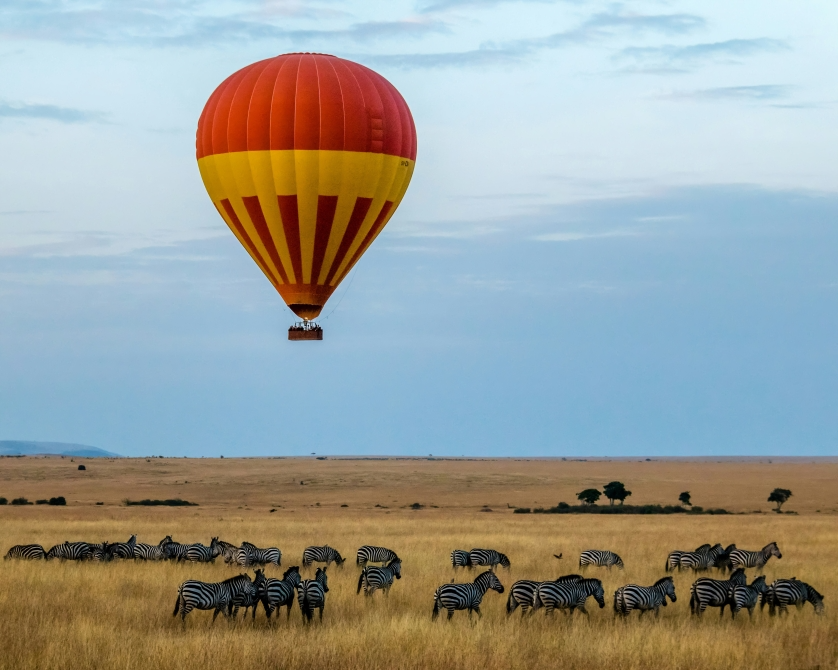
📌 Explore authentic, personalized safari experiences with us – check out our top Safari Packages to customize your dream adventure.
Landscape and Scenery
Serengeti’s Endless Plains
The Serengeti is defined by vast open plains, punctuated by kopjes and woodland. During months of green season, rolling grasslands are lush and dotted with acacia. In the dry season, golden grasses under wide-skies create postcard-perfect panoramas. The diversity of terrain—from grassy southern plains to granite kopjes and wooded riverine corridors—supports varied ecosystems and dramatic landscapes.
The Rolling Hills of Maasai Mara
In contrast, the Maasai Mara offers gently rolling hills, acacia groves, and the signature Mara River meandering through the reserve. Tree-dotted savanna and varied elevation create aesthetically pleasing terrain. The rise-and-fall of hills, interspersed with riverine gullies, often translate to dramatic wildlife photos—especially during river crossings when landscape features frame the action.
Accommodations and Lodging
Luxury vs Budget Options in Serengeti
The Serengeti offers a wide array of accommodation options, from ultra-luxury tented lodges to budget-conscious mobile camps that follow the migration patterns. High-end lodges come with amenities like plunge pools, personal butlers, and gourmet bush dining. If you’re keen to track the Great Migration closely, mobile camps provide a flexible, immersive way to be right in the action, adjusting their location according to the movement of herds.
Budget travelers aren’t left out. Numerous mid-range lodges and basic campsites offer excellent value, especially in the low season. The sheer size of the Serengeti means you can select from a variety of settings—riverside retreats, hilltop views, or remote bushveld seclusion.
Contact us for your next budget-friendly accomodation in the Serengeti!
Lodging Choices in Maasai Mara
Accommodation in the Maasai Mara is just as diverse. From luxurious boutique lodges with views of the Mara River to eco-conscious conservancy camps that provide personalized safari experiences, options abound. The Mara’s more compact layout means even mid-range and budget-friendly accommodations can offer close-up wildlife encounters.
One standout benefit of staying in Mara conservancies is access to exclusive activities such as off-road game drives, night safaris, and walking tours, often unavailable in the main reserve. Whether you’re after rustic charm or five-star opulence, you’ll find a stay that suits your style and budget.
📌 Looking to plan your stay? Start building your dream safari now—click here to Book Now.
Best Time to Visit
Seasonal Differences in Serengeti
- Dry season (June–October): Best wildlife visibility, including migration and river crossings. Days are sunny and nights cool.
- Green season (November–May): Fewer crowds, lush landscapes, calving season (December–March). Rainfall peaks in April/May, though animals congregate around water sources for easier photographic scenes.
Ideal Times for Maasai Mara Adventures
- July–October: Peak migration viewing with river crossings and predator action.
- Rest of year: Wildlife still abundant, more solitude—but migration is not present until crossing season.
Crowd Levels and Tourism Pressure
Serengeti’s Vastness and Solitude
Because of its expansive size, Serengeti spreads visitors thinly across zones. If you avoid central Seronera during peak, you’ll find fewer vehicles at sightings. Even at migration peaks, parking is less congested and experiences often feel more authentic.
Maasai Mara’s Popularity and Accessibility
The Mara’s popularity results in higher visitor density, especially during migration. Game drives may converge at the same sightings. Traffic jams near river crossings can reduce the sense of wilderness. However, opting for conservancies rather than the core reserve can offer more space and fewer crowds.
Conservation and Sustainability
Efforts in the Serengeti
Serengeti National Park has been a UNESCO World Heritage Site since 1981. Conservation initiatives include anti-poaching efforts, community-based tourism programs, and strict zoning to preserve ecosystem balance. While human-wildlife conflict remains a concern in surrounding areas, partnerships between park authorities and local Maasai communities help promote conservation awareness.
Initiatives in Maasai Mara
The Maasai Mara ecosystem includes multiple conservancies managed jointly with Maasai landowners. These areas enforce stricter driving rules, limits on visitors, and enhanced wildlife protection. Revenue sharing with Maasai communities ensures economic incentives to conserve wildlife. However, the core reserve experiences more tourism pressure and associated environmental impacts.
Cost and Budgeting
Costs of Serengeti Safari
Serengeti safaris generally cost more due to park fees, flight logistics, and distance between camps. Luxury lodges and migration-tracking mobile camps elevate the price significantly. Still, mid-range tented camps and overland packages can be more affordable if booked off-peak and via group tours.
Budgeting for Maasai Mara
Safari in Maasai Mara typically offers greater range in price. Day trips from Nairobi reduce travel costs significantly. Mid-range heart-of-reserve tented camps or conservancy stays offer good value. Overall, Mara tends to be more budget-friendly especially for short stays or last-minute bookings.
Cultural Experience
Interacting with the Maasai People
Both Serengeti and Maasai Mara offer interactions with Maasai communities, but proximity differs. In the Mara, many camps are situated on Maasai land and include guided cultural visits—visiting villages, talking to elders, learning beadwork or cattle-herding customs. In the Serengeti, cultural visits are less centralized and often require more travel from core camps.
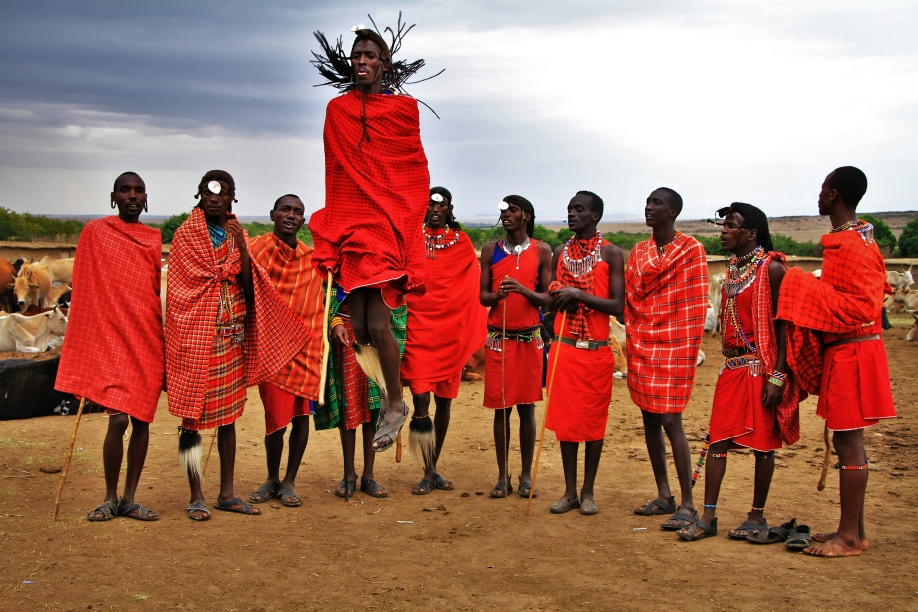
Cultural Insights from Surrounding Communities
Understanding Masai culture adds depth to your safari experience. Learning about their semi-nomadic lifestyle, traditional dances, and co-existence with wildlife illustrates the human side of conservation. Both parks support initiatives that benefit local communities—schools, clinics, and conservation partnerships; visiting responsibly helps support these programs.
Photography Opportunities
Lighting and Landscape in Serengeti
Serengeti’s wide-open skies, early morning golden light, and varied terrain allow for landscape-rich photography. Kopjes make excellent elevated vantage points for sweeping panoramas. Migratory herds crossing rivers or clustered around rivershores present dramatic compositions.
Wildlife Shots in Maasai Mara
Mara’s rolling terrain, riverbanks, and high predator activity produce high-action images—especially during crossings or hunts. Tree-climbing leopards, cheetahs in chase, and lions in pride are often in close proximity. The richer density means more photographic opportunities during shorter timeframes.
Safety and Travel Tips
Health and Safety in Serengeti
Ensure you’re up to date on yellow fever vaccination (required), malaria prophylaxis, and travel insurance. Wear long sleeves and use insect repellent, especially in gray season. Keep distance from wildlife, adhere to park rules, and travel in licensed vehicles.
Safety Advice for Maasai Mara Visitors
Similarly, get recommended vaccines (typhoid, hepatitis A), and carry anti-malarial meds. Stick with organized guides for game drives. If traveling conservancies, ask about camp protocols, emergency plans, and upkeep standards.
Final Verdict: Which Safari is Better for You?
Choosing between Serengeti and Maasai Mara comes down to your priorities:
| Priority | Serengeti | Maasai Mara |
|---|---|---|
| Migration in Kenya | Early/Late migration phases | Peak-season river crossings |
| Solitude & Expansive views | More space, fewer visitors | Dense wildlife, moderate tourism pressure |
| Photography style | Landscape-rich & wildlife diversity | Intense predator action & river drama |
| Accessibility/short stays | Longer travel, ideal for multistep tours | Quick in/out access, ideal for short trips |
| Cost flexibility | Higher logistically, can be costlier | Broader range, often more affordable |
| Cultural immersion | Limited, more remote village visits | Frequent cultural interaction on-site |
Plan, Explore, and Discover with Regal Tracks Safaris
To help you make the most out of your safari decision—whether it’s Serengeti, Maasai Mara, or both—here are helpful links from Regal Tracks Safaris to guide your journey:
- 🦁 Explore Safari Packages: Discover handpicked experiences across East Africa with our detailed Safari Packages
- 🗓️ Customize Your Itinerary: Have specific dates or locations in mind? Reach out directly via the Contact Section to tailor your safari.
- ✅ Ready to Book? It’s never too early to start planning. Visit our main site and Book Now in just a few steps.
- 📖 Read More Safari Stories: Want to dive deeper into African adventures, travel tips, and safari insights? Check out our Blog for fresh stories and expert guidance.
FAQs
1. Is Serengeti better than Maasai Mara for first-time visitors?
If you prefer convenience and guaranteed wildlife sightings within a shorter trip, Maasai Mara is ideal. But if you’re up for a longer adventure and the reward of more remote wildlife experience, Serengeti stands out.
2. Can I do both Serengeti and Maasai Mara in one trip?
Absolutely. Many safari packages combine both parks by flying into Kilimanjaro or Nairobi and crossing into Tanzania and Kenya. This gives you the best of both ecosystems and migratory timings.
3. Which park is more budget‑friendly?
Generally, Maasai Mara offers more flexibility with day trips from Nairobi and a wider range of priced accommodations. Serengeti can be more costly due to logistics and specialized camps.
4. What’s the difference in wildlife between the two?
Both parks host Big Five and Great Migration, but Serengeti is larger with greater species diversity and varied terrain. Mara offers higher density predator sightings and dramatic river crossings.
5. When is the best time for the Great Migration?
For river crossings, July through early October in the Maasai Mara. For calving and herd movement in Serengeti, November to May offers lush landscapes and fewer crowds.
2 Responses